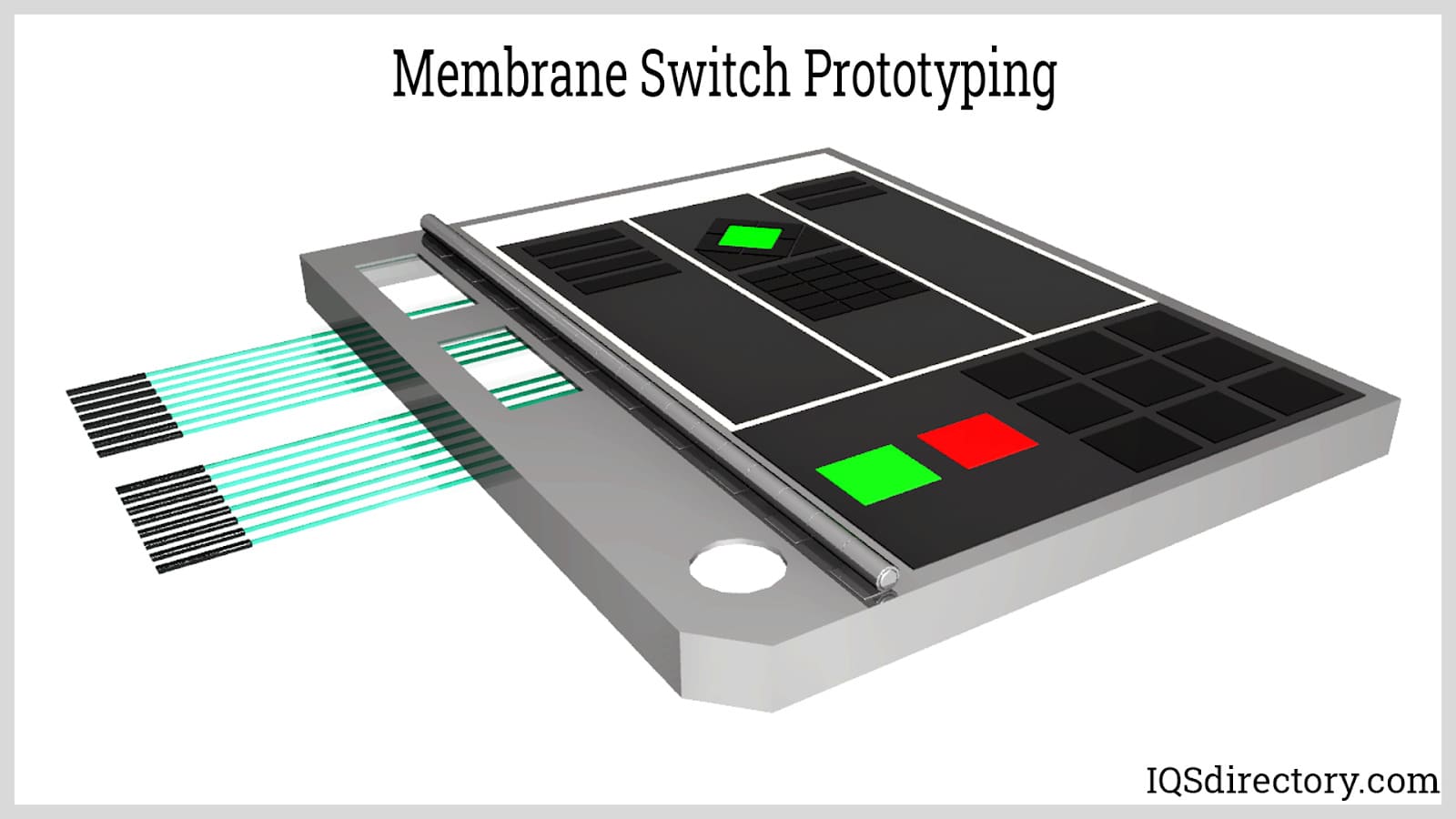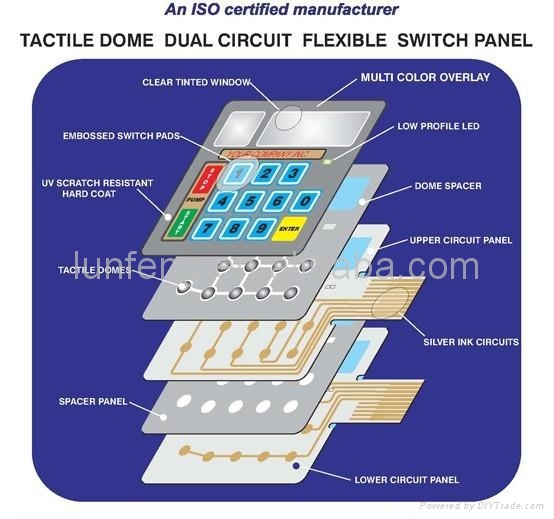The Role of Membrane Switches in Enhancing Product Aesthetics
The Role of Membrane Switches in Enhancing Product Aesthetics
Blog Article
Understanding the Relevance of Membrane Switches in Individual Interfaces
Membrane buttons are essential parts in the style of effective interface, helping with not only performance but additionally improving aesthetic charm and user communication. Their unique attributes, such as resistance to adjustable designs and environmental factors, make them appropriate for a varied array of applications throughout numerous markets. As we discover the different benefits and future trends connected with Membrane technology, it ends up being clear that these buttons are a lot more than simply components; they stand for a merging of development and functionality. The effects of this technology on individual experience deserve analyzing better.
What Are Membrane Switches?

The spacer layer, which contains glue residential or commercial properties, allows for the splitting up of the circuit layer from the overlay, guaranteeing that the switch remains in a non-activated state till pushed. When pressure is applied to the overlay, it presses the spacer layer, connecting the gap and finishing the circuit in the underlying layer. This layout not only minimizes the physical space needed for typical mechanical switches yet additionally improves the longevity of the device, as Membrane buttons are typically resistant to dirt, wetness, and various other ecological elements.
Commonly located in applications varying from consumer electronics to clinical devices, Membrane switches are integral to contemporary technology, giving a user-friendly and reliable interface that straightens with contemporary layout demands.
Benefits of Membrane Buttons
While numerous button technologies exist, Membrane Switches deal distinct benefits that make them specifically desirable in numerous applications. One of the main advantages of Membrane buttons is their small layout, which allows for space-saving executions in devices where realty is restricted. Their thin profile not just enhances aesthetic allure however likewise assists in lightweight building.
Another significant advantage is their resistance to environmental factors. Membrane switches are commonly secured against dampness, dust, and contaminants, making them perfect for usage popular atmospheres, such as clinical gadgets and industrial equipment. This toughness extends the life expectancy of the button, reducing maintenance expenses and improving integrity.
Moreover, Membrane switches can be customized to satisfy particular design requirements, integrating distinct graphics and shades that improve individual communication. Their responsive responses alternatives can additionally be customized to provide a rewarding individual experience. Furthermore, Membrane switches are affordable, particularly in high-volume applications, as they can be produced efficiently.
Applications in Numerous Industries

In the customer electronics sector, Membrane switches are prevalent in tools such as microwaves, washing machines, and remotes. Their tactile responses and aesthetic options improve user experience while providing a streamlined, modern appearance. Furthermore, automotive suppliers use Membrane switches in control panel controls and infotainment systems, where room is limited, and customer interaction is crucial.
In addition, the industrial field leverages Membrane switches in control panels for equipment and equipment, permitting for intuitive procedure in often extreme environments. Their resistance to chemicals and wetness ensures durability and reliability in these applications. Generally, the flexibility of Membrane Switches adds considerably to their prevalent use, making them vital in various technical domain names.
Style Factors To Consider for Membrane Switches

When making Membrane switches, a number of vital factors to consider must be thought about to make sure optimal performance and individual experience. To start with, the selection of products is critical; selecting resilient, top notch substratums can boost the button's long life and resistance to ecological variables such as dampness and temperature level fluctuations.
Second of all, the style of the graphic overlay must prioritize quality and ease of use. Icons and text must be legible, and the format needs to promote instinctive communication (membrane switches). Furthermore, tactile responses is crucial; including a responsive dome or other mechanisms can boost the individual experience by offering physical confirmation of activation
An additional crucial element is the switch's electric performance. Designers must ensure that the conductive traces are i was reading this effectively created to reduce resistance and avoid signal disturbance. This involves analyzing the needed actuation force and making certain compatibility with the digital components they will certainly interface with.

Future Trends in Membrane Modern Technology
As innovation proceeds to advancement, Membrane switches are positioned to evolve substantially, driven by innovations in products and making methods. One arising pattern is the consolidation of advanced products, such as flexible substratums and conductive inks, which improve resilience and reduce the general weight of Membrane buttons. These materials not only enhance the responsive response however additionally permit the design of switches that can hold up against harsher environmental conditions.
Moreover, the assimilation of touch-sensitive technologies is transforming traditional Membrane Switches into even more interactive customer interfaces. Capacitive touch sensing units embedded within Membrane switch panels can offer a much more instinctive and responsive user experience, aligning with the expanding demand for sleek, modern styles in customer electronic devices.
In addition, innovations in printing techniques, such as digital and 3D printing, enable rapid prototyping and customization of Membrane switches. This flexibility allows manufacturers to respond quicker to market demands and consumer preferences.
Lastly, sustainability is coming to be a substantial emphasis, with suppliers discovering environmentally friendly materials and processes. As these trends unravel, the future of Membrane innovation guarantees improved performance, aesthetic allure, and ecological duty, solidifying their function in advanced user interfaces throughout numerous markets.
Conclusion
To conclude, Membrane Switches stand for a vital part in the style of interface, combining capability with visual flexibility. Their benefits, consisting of longevity and resistance to ecological elements, make them suitable for varied applications throughout different sectors. In addition, thoughtful style considerations boost user communication and experience. As improvements in technology proceed, the evolution of Membrane buttons is expected to additional refine user interfaces, driving advancement and improving use in a progressively intricate technological advice landscape.
Membrane switches her explanation are essential parts in the design of effective individual interfaces, promoting not only performance however additionally improving visual allure and user interaction.Membrane Switches offer as an essential component in different individual interfaces, promoting a smooth interaction between individuals and digital gadgets.While countless switch innovations exist, Membrane Switches deal distinctive benefits that make them specifically preferable in various applications.Furthermore, Membrane switches can be personalized to satisfy certain style needs, including unique graphics and colors that improve individual interaction.In final thought, Membrane Switches represent a vital component in the design of user interfaces, combining functionality with aesthetic flexibility.
Report this page